Henri Fantin-Latour
Henri Fantin-Latour (14 January 1836 – 25 August 1904) was a French painter and lithographer best known for his flower paintings and group portraits of Parisian artists and writers.[1]
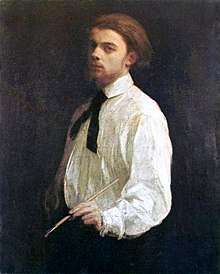
Biography
He was born Ignace Henri Jean Théodore Fantin-Latour in Grenoble, Isère. As a youth, he received drawing lessons from his father, who was an artist.[2] In 1850 he entered the Ecole de Dessin, where he studied with Lecoq de Boisbaudran.[2] After studying at the École des Beaux-Arts in Paris from 1854, he devoted much time to copying the works of the old masters in the Musée du Louvre.[2] Although Fantin-Latour befriended several of the young artists who would later be associated with Impressionism, including Whistler and Manet, Fantin's own work remained conservative in style.[2]
Whistler brought attention to Fantin in England, where his still-lifes sold so well that they were "practically unknown in France during his lifetime".[2] In addition to
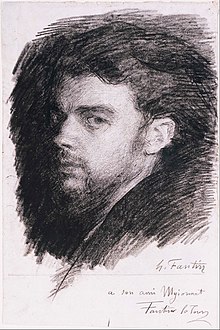
his realistic paintings, Fantin-Latour created imaginative lithographs inspired by the music of some of the great classical composers.
In 1875, Henri Fantin-Latour married a fellow painter, Victoria Dubourg, after which he spent his summers on the country estate of his wife's family at Buré, Orne in Lower Normandy, where he died on 25 August 1904.
He was interred in the Cimetière du Montparnasse, Paris, France
Legacy
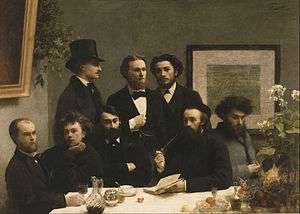
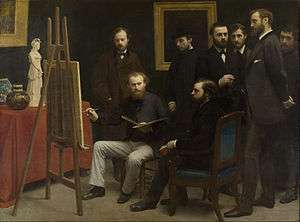
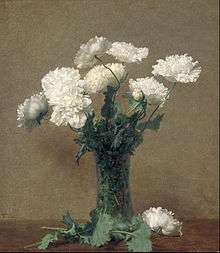

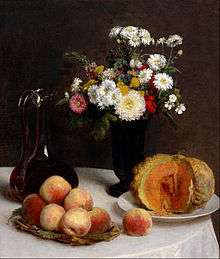
.jpg)
Marcel Proust mentions Fantin-Latour's work in In Search of Lost Time:
"Many young women's hands would be incapable of doing what I see there," said the Prince, pointing to Mme de Villeparisis's unfinished watercolours. And he asked her whether she had seen the flower painting by Fantin-Latour which had recently been exhibited. (The Guermantes Way)
His first major UK gallery exhibition in 40 years took place at the Bowes Museum in April 2011.[3] Musée du Luxembourg presented a retrospective exhibition of his work in 2016–2017 entitled "À fleur de peau".
The painting A Basket of Roses was used as the cover of New Order's album Power, Corruption & Lies by Peter Saville in 1983.
Public collections holding works by Fantin-Latour
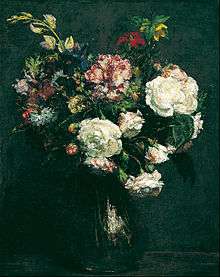
- Aberdeen Art Gallery (Scotland)
- Armand Hammer Museum of Art (California)
- Art Gallery of New South Wales (Sydney, Australia)
- Art Gallery of the University of Rochester (New York)
- Art Institute of Chicago
- Arthur Ross Gallery (University of Pennsylvania)
- Ashmolean Museum (University of Oxford)
- Birmingham Museums & Art Gallery (UK)
- Bowes Museum (County Durham, England)
- Carnegie Museum of Art (Pittsburgh, Pennsylvania)
- Clark Art Institute (Williamstown, Massachusetts)
- Cleveland Museum of Art
- Dallas Museum of Art
- Detroit Institute of Arts
- Dixon Gallery and Gardens (Tennessee)
- Fine Arts Museums of San Francisco
- Fitzwilliam Museum (University of Cambridge)
- Fondation Bemberg Museum (Toulouse, France)
- Foundation E.G. Bührle (Zürich)
- Harvard University Art Museums
- Hermitage Museum
- Honolulu Museum of Art
- Indiana University Art Museum
- Kröller-Müller Museum (Otterlo, Netherlands)
- Lady Lever Art Gallery (UK)
- La Piscine (museum of art and industry) (Roubaix, France)
- Los Angeles County Museum of Art
- MacKenzie Art Gallery (Regina, Saskatchewan)
- Manchester City Art Gallery (UK)
- Metropolitan Museum of Art
- Montreal Museum of Fine Arts, (Canada)
- Museum of Grenoble (France)
- Musée de Picardie (Amiens, France)
- Musée des Beaux-Arts de Bordeaux (France)
- Musée des Beaux-Arts de Lyon (France)
- Musée des beaux-arts de Pau (Pau, France)
- Musée des Beaux-Arts (Reims, France)
- Musée des Beaux-Arts de Rouen (France)
- Musée d'Orsay (Paris)
- Musée du Louvre (Paris)
- Musée des Ursulines (Mâcon, France)
- Museo Nacional de Bellas Artes (Buenos Aires, Argentina)
- Museu Calouste Gulbenkian (Lisbon)
- Museum of Fine Arts, Boston
- National Gallery of Art (Washington D.C.)
- National Gallery of Canada
- National Gallery, London
- National Museum Cardiff
- Nelson-Atkins Museum of Art (Kansas City, Missouri)
- Norton Simon Museum (Pasadena, California)
- Old Jail Art Center (Albany, Texas)
- Philadelphia Museum of Art
- Rijksmuseum (Amsterdam)
- Saint Louis Art Museum
- San Diego Museum of Art
- Smart Museum of Art (University of Chicago)
- Tate Gallery (London)
- Toledo Museum of Art (Ohio)
- Université de Liège Collections (Belgium)
- Victoria and Albert Museum
- Wadsworth Atheneum (Hartford)
- Winnipeg Art Gallery
Gallery
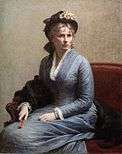 Portrait of Charlotte Dubourg, 1882, Paris, musée d'Orsay
Portrait of Charlotte Dubourg, 1882, Paris, musée d'Orsay- Sonia, 1890, National Gallery of Art
 Édouard Manet, 1867, Art Institute of Chicago
Édouard Manet, 1867, Art Institute of Chicago- Madame Lerolle 1882
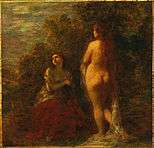 Dawn
Dawn.jpg) Roses,
Roses,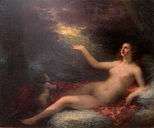
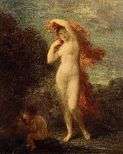
.jpg) La Lecture, 1877, Musée des Beaux-Arts de Lyon
La Lecture, 1877, Musée des Beaux-Arts de Lyon_-_Google_Art_Project.jpg) Still Life, primroses, pears and promenates, 1873
Still Life, primroses, pears and promenates, 1873.jpg) Vase of Roses 1875
Vase of Roses 1875.jpg) Still Life with Flowers and Fruit, 1865
Still Life with Flowers and Fruit, 1865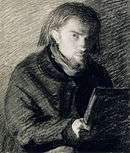 Self-Portrait, pencil, charcoal, and whitening, 1860
Self-Portrait, pencil, charcoal, and whitening, 1860 Still Life with Mustard Pot, 1860, National Gallery of Art
Still Life with Mustard Pot, 1860, National Gallery of Art
Notes
- Rosenblum 1989, p. 162.
- Poulet & Murphy 1979, p. 73.
- "A Bed of Roses: Fantin-Latour and the Impressionists at the Bowes Museum". Thebowesmuseum.org.uk. Archived from the original on 14 April 2011. Retrieved 17 September 2013.
References
- Gibson, Frank F., The art of Henri Fantin-Latour, his life and work, London, Drane's ltd., 1924.
- Lucie-Smith, Edward, Henri Fantin-Latour, New York, Rizzoli, 1977.
- Poulet, Anne L., & Murphy, A. R., Corot to Braque: French Paintings from the Museum of Fine Arts, Boston, Boston: The Museum, 1979. ISBN 978-0-87846-134-9
- Rosenblum, Robert, Paintings in the Musée d'Orsay, New York: Stewart, Tabori & Chang, 1989. ISBN 978-1-55670-099-6
External links
| Wikimedia Commons has media related to Henri Fantin-Latour. |
| Wikiquote has quotations related to: Henri Fantin-Latour |
- 96 paintings by or after Henri Fantin-Latour at the Art UK site
- Henri-Fantin-Latour.org 273 works by Henri Fantin-Latour
- Henri Fantin-Latour, Still Life, 1867, watercolor, Bryn Mawr College Art and Artifact Collections